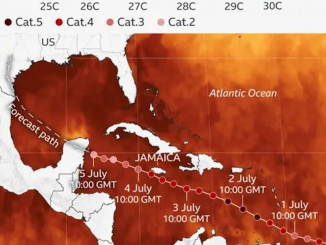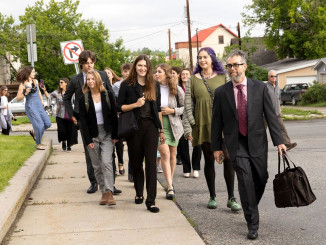Across the country, in every major city, our public transportation systems are under attack at the same moment that more people than ever are relying on public transit. Since 2010, the number of people in the U.S. who rely on public transportation has reached its highest level in fifty years. Overall, the use of public transportation has increased 38 percent since 1995 – this is almost three times the rate of increase in the population. But transportation budgets are facing massive service cuts, layoffs, wage cuts and fare increases. Both riders and transit workers are under attack at a time when public transit is most needed.
Funding Cuts
Public transportation is funded in complicated ways. Most transportation funding supports private automobile transportation through highways and roads. Only 18 cents of every federal dollar for transportation supports public transit. This is because cities have to pay a bigger share of the cost for public transit projects than for highways and roads. A local community has to provide a dollar for each federal dollar received in public transit funding, but only 25¢ for each federal dollar received for highways. This encourages cities to build roads and highways rather than public transit systems.
Public transit agencies also have restrictions on how they can spend their federal funds. Many federal grants can only be spent on new construction and new equipment. They can’t be spent on wages and hiring, or maintenance of current equipment. In this way, federal funding ends up in the pockets of corporations through contracts to supply new buses, trains or other transport vehicles, and large construction firms that construct new lines and stations. Often many transit agencies end up buying new equipment without having the staff to operate it.
So far this restriction only applies to larger transit systems which serve an area with 200,000 people or more. But the federal government is trying to impose the same restriction on all transit agencies by lumping several smaller areas together, creating larger regional transit agencies, so that in total the number of people is greater than 200,000. This way the restrictions apply to every individual city within the larger area.
Transit agencies have to rely on state and local funding to survive. These sources of funding have suffered massive funding cuts due to state budget deficits. States continue to have record budget deficits. It’s not that the states don’t have the money for these services – it’s just that they refuse to tax the super rich to get the money in the first place.
The result is that funding for transportation along with other public services, has been slashed. Transportation funds in California have been cut by about eight to ten billion dollars since 2000. And only 15 percent of these funds go to public transportation.
These Attacks Aren’t New
The assault on public transportation is not new. In 1926, every major city had a functioning public transportation system. But in the 1930s, major auto, oil, and tire companies (General Motors, Standard Oil, Firestone tires, and others) teamed up to destroy public transit in 45 cities across the country. Together these corporations pushed through huge taxpayer-funded programs exclusively for highways, tunnels and bridges for automobiles, forcing millions of people to buy cars just to get around. In other words, for the sake of their profits, these companies destroyed a working public transportation system, replacing it with a horribly inefficient and extremely expensive individualized automobile system.
Having a Future Depends on Public Transit
Our systems of transportation impact our lives in many ways. In most of the U.S. today, it is necessary for most adults to own a car. The individual automobile is the main method of personal transportation to and from work and home – everybody in their own car. This method of transportation causes huge problems for the environment, for people’s health, and for quality of life. If we are going to have a future, we need to change our method of transportation, and public transit will be a necessary part of the solution.
For decades, scientists have pointed out the dangers of climate change. The major cause of global warming is the emission of what scientists call greenhouse gases, which trap much of the sun’s energy close to earth, creating this warming effect. Cars and trucks are responsible for almost 25 percent of global greenhouse gas emissions. If we are going to reduce greenhouse gases, we must reduce the number of cars on the road.
What about hybrid and electric cars? Some people argue that we can stop greenhouse gas emissions by choosing better cars. But it doesn’t matter what kind of car we drive – it takes massive amounts of energy to build a car. If an electric car is being charged with electricity from a coal-powered energy plant, it’s still polluting, just from the powerplant’s smokestack rather than the car’s exhaust pipe.
Cars degrade our quality of life. Hours spent in traffic cause stress, and waste time, and threaten our health and even our lives. The areas with the highest traffic congestion have the highest rates of childhood asthma, and 1.3 million premature deaths a year are caused by pollution from car exhaust. Traffic is also unsafe. Traffic accidents take up to 33,000 lives a year making them the number one cause of death for people under the age of 34.
Public transit has the potential to address all these problems. It’s simple math. Public transportation produces five to ten percent of the greenhouse gases that cars and trucks do – and that’s not even with the most advanced transportation technologies, like solar and magnetic. Putting more public transit in place will dramatically reduce the need for cars on the road and significantly reduce carbon emissions.
The main reason people rely on cars is because of the poor state of public transit. A Natural Resource Defense Council survey polled that 55 percent of Americans would prefer to drive less, but 74 percent say they have no choice. The average American spends one week per year in traffic. Who in their right mind would prefer spending hours alone in traffic to a quick ride on a train or bus?
Public transit is safe. Traffic accidents are caused by thousands of drivers hurrying to and from their destinations. All of the thousands of deaths caused by traffic pollution could be eliminated by clean efficient public transportation. Studies have shown that communities with better public transit systems have one quarter as many traffic fatalities.
Public transportation would improve our lives on all fronts, from the environment, to health, to quality of life. The only thing that is stopping us is the fact that our current system of transit is organized for the benefit of the gas, tire and other auto companies, profiting by putting each of us in a car as we pour dollars into our gas tanks and into their pockets. We need a different set of priorities which takes into account the environment, our health, and our quality of life. If our society is going to have a better future, public transit will be an necessary part of the equation.




